Andrew’s Story: Securing a settlement after a life-changing bicycle accident
Andrew’s story:Securing a $945,000 settlement after a life-changing bicycle accident Since this story was written, Andrew has sadly passed away. His voice was a call
Our client had paid to participate in an endurance obstacle course and had signed a liability waiver (as required by the event organizer) acknowledging that the event was dangerous and waiving his right to compensation. Our client has then in the course of the event sustained a horrific injury whereby he injured a finger on his dominant hand, severely disfiguring him.
Our client approached Gerard Malouf & Partners unsure about his right to compensation in the circumstance where he had signed a waiver.
We commenced proceedings in court on behalf of our client, however the Defendant attempted to hide behind the waiver and claim that as the client had signed this waiver document they were not liable to pay compensation for his injuries.
The team at Gerard Malouf & Partners were able to show, through the extensive subpoena material obtained, that our client’s injury was caused as a result of the organiser’s negligence outside of the scope of the waiver. Subpoena material showed that shoddy workmanship was the result of hazard which caused our client’s injury. The event organiser had failed in their duty of care to the client by allowing the hazard and failing to take any precautions against the foreseeable risk of harm.

Public liability refers to the responsibilities owners or occupants of public space have to protect anyone who enters. If the owners or occupants fall short of these responsibilities, resulting in an injury, a case for compensation can be made.
Some of the most common incidents covered by public liability law include:
Following an initial meeting, the first task will be to establish the general facts of the case. This will include your medical diagnosis, which will need to be confirmed and documented by a doctor; and proof that the person or company at fault owed you a duty of care, which will need to be demonstrated. Together, this will show that your injury occurred when they breached that duty of care.
From there a further investigation will proceed—contacting and interviewing witnesses, speaking with expert consultants, and more—all in order to bolster the strength of your case even further. Only once this process is complete, and your claim can be demonstrated and proven in full, will the process move on to the next step.
There are time limits involved with public liability claims, so it’s important to make a claim as soon as possible to ensure you remain eligible. Usually, individuals have three years from the date of injury to file a claim but this may differ by state and it is often best to start the claims process as early as possible.
Andrew’s story:Securing a $945,000 settlement after a life-changing bicycle accident Since this story was written, Andrew has sadly passed away. His voice was a call
Maria’s story: $232,500 after a shopping centre trip and fall Maria’s story Maria, a jewellery sales consultant, experienced how quickly life can change when an
Jennifer’s Journey:Achieving Justice and $242,500 After a Slip and Fall Injury Jennifer’s story In October 2022, a routine lunch outing turned into a life-altering experience
Mansour’s story:Securing $870,000 settlement after a heavy vehicle collision This image does not depict our actual client. Mansour’s story In early 2024, Mansour’s life was
A wife’s perspective:Securing a $850,000 settlement after a workplace accident David’s story through Paula’s eyes On August 1, 2019, what started as a routine day
Nick’s Journey: Securing a $250,000 public liability claim outside of the statute of limitations Jump to Result Nick’s story In February 2020, Nick’s life changed
In the spirit of reconciliation GMP Law acknowledges the Traditional Custodians of country throughout Australia and their connections to land, sea, and community. We pay our respects to their Elders past, present, and emerging, and extend that respect to all Aboriginal and Torres Strait Islander peoples today.

Your location is currently:
Please wait while you are redirected to the right page...